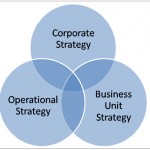Managing difficult employees – a topnotch leadership skill

Nowadays, more and more entrepreneurs have to undertake the difficult-employees challenge, in which their managerial skills will be thoroughly tested.
Although it is believed that their workplace can staunchly defend itself against such a trial – by permanently developing and nurturing a strong organizational culture, characterized by transparency, there are many different and trying personalities you have to keep track of so as not to end this process in failure.

To help out busy managers handle difficult employees, Jezra Kaye and Anne Loehr wrote Managing the Unmanageable: How to Motivate Even the Most Unruly Employee. The book does not only present strategies for dealing with the difficult-employees challenge, but also states the most commonly known “types” of employees that can found in almost every organization. As we all know, difficult people can negatively impact team performance. A good business leader has to develop the right skills in order to manage the unmanageable employees and help his/her company steer towards success.
Some of the most frequently mentioned traits identified by researchers, characterizing these difficult personalities are: negativity, unsociability, exploitation, victimization, indifference and narcissism. As per Kaye and Loehr’s interpretation, the most demanding employee profiles are as follows:
- The AWOL: this type of employee neglects his/her job, by constantly “forgetting” important tasks, having things come up at the last minute, being often late or even disappearing altogether. His/her deadlines are missed, tasks remain unfinished and tensions rise among the rest of the staff, because everyone knows that somebody has to cover his/her duties again and again;
- The Grumbler: it is very hard to communicate with The Grumbler in an office environment, and even outside it. They constantly complain about everything and their tasks hardly meet the deadlines. Most often, a grumbler squashes not only a team’s enthusiasm, but also kills every good idea with his/her negative feedback;
- The Rude-nik: Raised voice, hissy fits, name-calling, rudeness, aggressiveness, all of these are the “gifts” such a person shares with his/her teammates at the workplace. Difficulties arise especially when trying to communicate with a Rude-nik, since this tends to flare up his/her arrogance.
- The Wallflower: usually it is hard to say if this type of person is either extremely insecure, extremely shy or simply not interested in being proactive at work. This employee may be found sitting alone even at lunch and not willing to build a relationship with teammates. In time, it gets too difficult to communicate and work with this individual, especially when a leader tries to develop a teamwork spirit.
The aforementioned characters are the most nerve-racking types of personalities a manager and his fellow staff have to handle in their day-to-day activities. Naturally, a company which has well-established goals and provides a strong organizational culture usually does not encounter this issue, but it is commonly known that difficult people have a way of showing up everywhere.

Coming to managers’ aid, Jezra Kaye and Anne Loehr identified the so called 5 Cs, five strategies that will aid leaders in developing the right skills:
- Commit or Quit: choose to either take on the challenge of managing the person in a different way or simply quit. You have to take into account both alternatives and choose the one that bring less harm to your company.
- Communicate: having an honest conversation with that specific employee is mandatory in identifying the problem. Usually these types of conversation include clarifying organizational goals, job role and engagement.
- Clarify Goals and Roles: although employees often think they know what it is expected of them, managers quickly realize their employees did not accurately understand the right goals they should be aiming for and roles they should be filling.
- Coach: this is a strong management tool, which allows managers to deal with difficult employees’ behavior, changing it so that they become engaged at the workplace.
- Create Accountability: take some time to create a trust-based relationship with your employees and a strong management system, where everyone can improve at their own individual pace.
Overall, managing difficult employees is never straightforward and it can take years to develop these skills. But when leader identify the hardships facing each employee, we can safely assume that a step has already been made towards finding a solution. The best business leaders will always act for the good of the company, in order to generate the most beneficial workplace environment.

Tags: Leadership, Management performance, Team Performance





